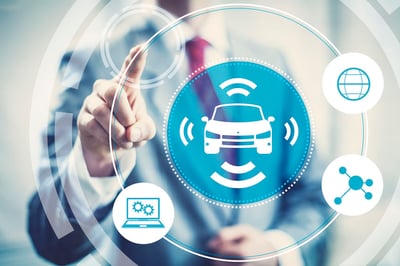How autonomous vehicles are used in shipping & logistics
We’ve written about shipping innovations before, but this week we dive into the emerging world of autonomous vehicles.
The American Trucking Association estimates a significant shortage of truck drivers in the coming years. Meanwhile, the e-commerce world keeps growing and accelerating.
The combination of fewer drivers and the expectation of shorter delivery times are just a couple of reasons why autonomous vehicle technology could be the next big thing in shipping.
Of course, there are concerns about large trucks driving themselves on highways and through cities. For this reason, manufacturers are progressing slowly to ensure the technology is safe before releasing it.
Self-driving trucks? Really?
Some vehicles have already been tested:
 Autonomous US Postal Service trucks were tested in three Southwestern states by TuSimple, a San Diego-based startup company. The vehicles hauled mail from Phoenix and Dallas with a safety driver behind the wheel as back-up.
Autonomous US Postal Service trucks were tested in three Southwestern states by TuSimple, a San Diego-based startup company. The vehicles hauled mail from Phoenix and Dallas with a safety driver behind the wheel as back-up.- An advanced version of the Daimler 18-wheeler was also tested. This Mercedes-Benz product was the first self-driving semi-truck to hit the road in North America.
- American Freightliner has also created a prototype vehicle similar to the one from Mercedes-Benz. However, it hasn't been able to pass slower-moving vehicles on the highway yet. This autonomous vehicle does have an alarm to notify the driver to take over if there's an emergency or bad weather, however.
3 ways autonomous vehicles can be used in shipping today
While there are kinks to be worked out with autonomous vehicle technology, let's look at a few of the ways these automatic semi-trucks can be used to benefit the shipping industry.
1. Truck platooning
For long-haul routes, some trucking companies are considering what is known as truck platooning. This is a series of trucks following each other in a platoon with a driver-controlled truck leading the several automatic trucks.
Platooning allows for adaptive cruise control and forward-collision warning technology to be used through direct short-range communication.
MIT found that truck platooning can save as much as 20% on fuel costs, and scheduling efficiency can be increased if trucks are released in platoons at regular intervals.
2. Mail delivery
The University of Michigan and the USPS have partnered to create a self-driving mail truck. This truck is called the Autonomous Rural Delivery Vehicle. The USPS has the goal of using these vehicles to cover about 28,000 rural mail routes by 2025.
While these automatic self-driving vehicles would still have a mail carrier in the truck, they would be able to spend their time sorting mail and filling mailboxes.
3. Last-mile delivery
Whether it's groceries or other goods, last-mile delivery is another opportunity for autonomous vehicle technology. With large delivery vehicles making up as much as 20% of urban traffic, using smaller self-driving vehicles for last-mile delivery could help alleviate the congestion.
Larger delivery hubs can be located at the outskirts of cities. Then, mobile delivery hubs can use smaller, self-driving vehicles, or even drones, to deliver the goods to their final destination.
Boxbot in California has already started testing this idea with a last-mile delivery system combining the hub with street-based vehicles. Some of the vehicles are self-driving electric vehicles, but it's just in the testing stages.
While self-driving trucks aren’t taking over the industry yet, it’s clear that autonomous vehicle technology is combining in some capacity. In part 2 of this article, we’ll cover the benefits and drawbacks of this emerging tech.
With more than 60 years of transportation experience on air, land and sea, Cole is ready to help get your goods from point A to point B efficiently and safely. Contact one of our logistics experts today!

Latest Articles
- CBSA Verification Priorities - January 2026
- 7 ways Canadian importers reduce risk when ordering overseas
- Watch out for these extra charges on your freight bill
- Key differences between duty drawbacks and duty refunds for importers
- Mitigating container shortages and rising shipping prices for ocean imports
